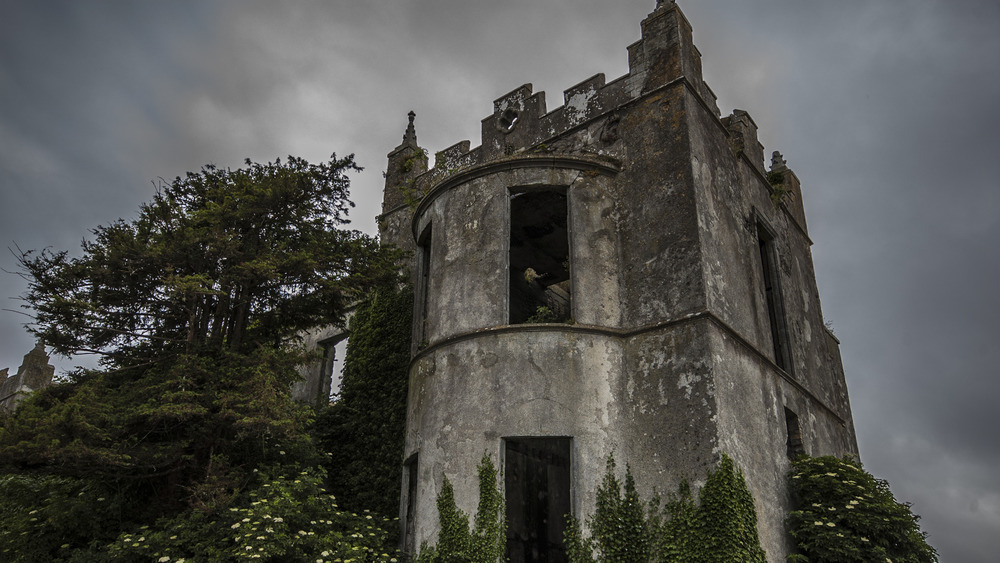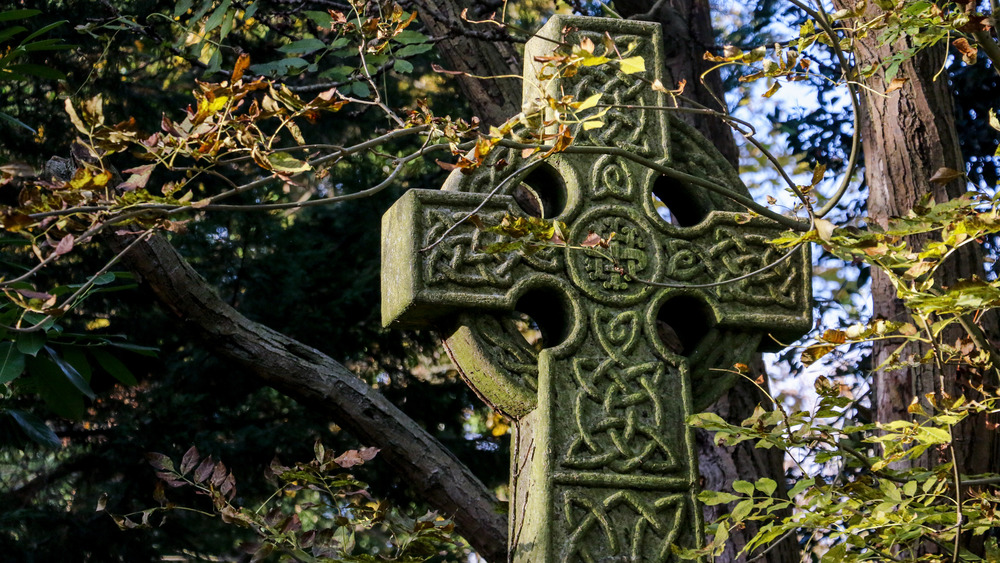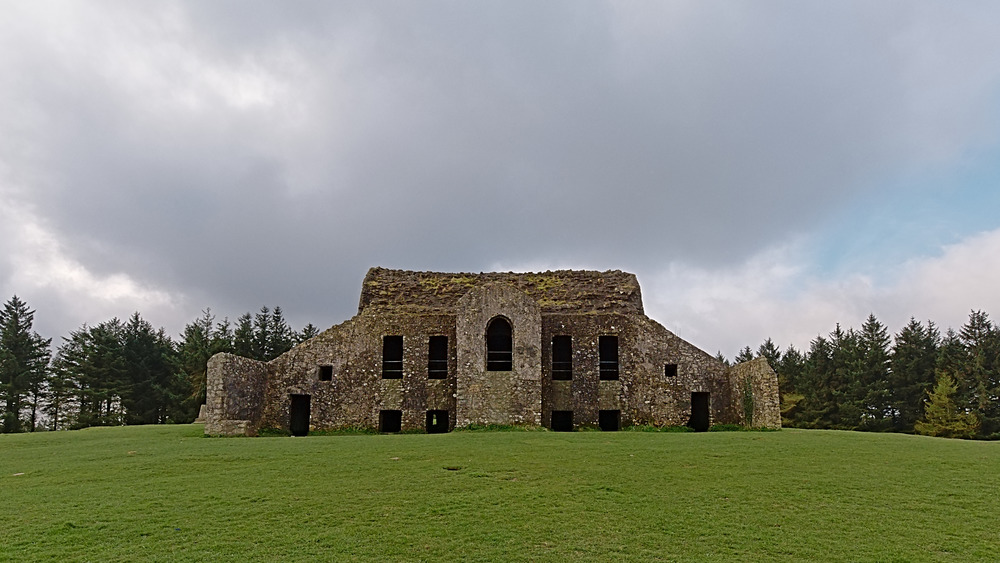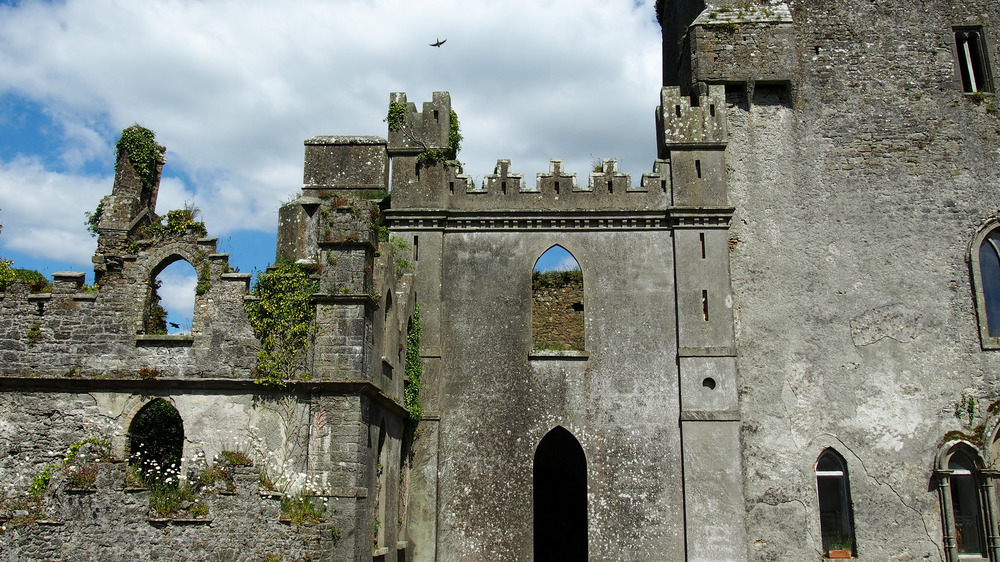The Untold History Of Ireland's Haunted Castles
As we all know, ghosts come in a wide variety of types. You've got your hallway ghost, your stairway ghost (likely legless), your Halloween whitesheet ghost, your evil nun ghost like in those Insidious movies, your Dickensian Ghost of Christmas Past, Ghost the Swedish metal band, and of course, Ghostface Killah.
Ah, but what about castle ghosts? Yeah, they're spooky, too. Of course, in order to have castle ghosts, you need castles. Those now-ruinous, rocky blocks owned by lords and ladies of centuries past are in great supply in the U.K. and European countries. Wales might have the most, and most varied, castles in the world (truly fantastic, multi-spired fortresses), as National Geographic explains, but it's Ireland that has a lot of, well... haunted castles. So much so that an entire tourism industry has sprouted up around them, as the dubiously named "Authentic Vacations" travel site outlines.
But to be clear, Ireland has a lot of castles. Speckling the Irish countryside along and between the rolling, gorgeous green there are, in fact, 30,000 castles (that's a lot of ghosty mcnasties). Many of these castles are broken fragments just hanging around by the roadside, begging explorers to stroll in with a PKE meter from Ghostbusters. The oldest one, as Irish Central states, is Kilbrittain Castle in Country Cork, built nearly 1,000 years ago in 1035 CE. Whether or not you believe in "ghosts" yourself, that's a lot of time, history, and deaths for the supernatural to leave a lasting imprint.
Predisposed to believe in the supernatural and sensitized to violence
Even though stories of the deceased, and how they haunt the living, prevail across cultures all over the world, it's true that Ireland has a particular love of them. The occult, pre-Christian Celtic belief systems, Druidic folklore, seasonal festivals like the dead-honoring Samhain (pronounced sah-wain) that gave rise to our modern Halloween: such beliefs in the supernatural and paranormal are baked into the fabric of Ireland as surely as jokes about drunk priests (per Irish Mirror) and a lingering contempt for the English (per lots of sources, such as the Irish Times).
On top of this, Ireland has been subjected to a litany of historical conflicts, invasions, occupations, wars, you name it. Ireland was first settled some 7,000 – 8,000 years ago, as Rare Irish Stuff tells us. Since then, they have been colonized by the Celts around 1200 BCE, invaded by the Vikings around 800 CE (who were kicked out by 1000 CE), conquered by the Normans in the 1100s (which set off an 800-year conflict with England), and encompassed failed uprisings such as those of Wolfe Tone (1763 – 1798), the Great Famine of 1845 – 1862, and the sectarian violence of "The Troubles," a fractious period of history from 1968-1998 that led to the tragic "Bloody Sunday" incident on January 30, 1972, when English paratroopers opened fire into an unarmed, Irish crowd.
These two factors combined, is it any wonder why the country is replete with ghost stories?
A ghost of every kind, and a castle for every ghost
When looking at some of Ireland's more famous haunted spots, we'd be remiss to mention some other tales that prevail around the Emerald Isle. We've got the Hellfire Club (kind of like an Eyes Wide Shut thing plus demonic pacts, per the Dublin City Council website), stairways to hell (like the opposite of that Led Zeppelin song), mummies and prison ghosts (all per Wilderness Ireland), falsely accused witch-turned-murdering-spirit Black Alice (per Emerald Isle), and most famous of them all: the Headless Horseman ("Gan Ceann" in Irish), which was adapted into Washington Irving's The Legend of Sleepy Hollow, per History.
And then, of course, there's the haunted castles. XYU and Beyond highlights a lot of them, many of which double up as B&Bs. There's Antrim Castle, which features a ghostly wolfhound transformed into stone (not the one from Ghostbusters), Ballyseede Castle with its atypically "friendly ghost" Hilda the WWI nurse, 12th century Carrickfergus Castle roamed by 18th-century soldier ghost "Buttoncap" who slept with his superior's wife (when alive), late 1500s Athcarne Castle with its bloody-handed hanged child ghost, Malahide Castle haunted by a jester named Huck and a ghostly suit of armor belonging to a drawn-and-quartered man that itself falls apart into four pieces, and because of course, haunted-by-a-crying-baby Castle Leslie, where Paul McCartney got married in 2002.
So why not grab a walkie-talkie, some crepe paper and talcum powder like those A&E Ghost Hunters, and get to work?
Overall: less than credible, but a couple incredible
It's kind of hard to talk about the credibility of any of these stories when the credibility of ghosts isn't even an irrefutable thing. Discussions of the truth of life after death are mired by fear of death, psychological phenomena like apophenia (the tendency to see patterns where none exist), inadequate measurement tools, varying cultural definitions of entities, forces, spirits, etc., differing scientific explanations of ghosts, and so on.
Irish news site The Journal, in fact, discusses how author and photographer Tarquin Blake has debunked many of the nation's ghost stories in his 2014 book Haunted Ireland. Blake set out to physically verify the historical authenticity of haunted sites. What did he discover? "99 percent were purely fictional. They were about non-existent people and non-existent townlands." Many tales derived from folklore and took a "flamboyant" form over time as they became integrated into local stories "like a jigsaw."
But don't worry, ghost lovers: Culture Trip highlights some Irish paranormalities that are, at minimum, undebunkable. One of them involves a castle: Leap Castle in County Offaly, which began as "a stronghold of Irish chieftains," and whose stories have actually been corroborated by Blake. In the 1900s, 150 skeletons were found inside, underneath a secret trapdoor. The owner's wife conducted seances to communicate with the dead, and reportedly made contact with a woman in a red dress holding a dagger. The castle even has a "Bloody Chapel" that often fills with bright lights at night.



